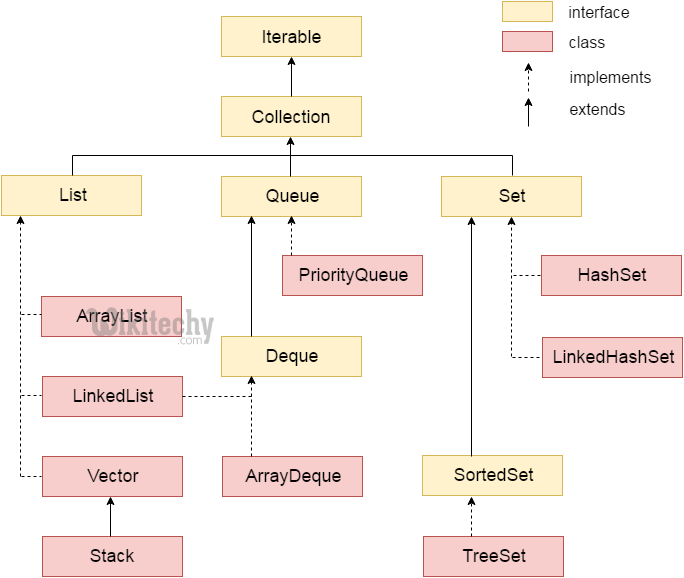java tutorial - Collections in Java - java programming - learn java - java basics - java for beginners
- Collections in java is a framework that provides an architecture to store and manipulate the group of objects.
- All the operations that you perform on a data such as searching, sorting, insertion, manipulation, deletion etc. can be performed by Java Collections.
- Java Collection simply means a single unit of objects. Java Collection framework provides many interfaces (Set, List, Queue, Deque etc.) and classes (ArrayList, Vector, LinkedList, PriorityQueue, HashSet, LinkedHashSet, TreeSet etc).
What is Collection in java
- Collection represents a single unit of objects i.e. a group.
What is framework in java
- provides readymade architecture.
- represents set of classes and interface.
- is optional.
What is Collection framework
Collection framework represents a unified architecture for storing and manipulating group of objects. It has:
- Interfaces and its implementations i.e. classes
- Algorithm
Hierarchy of Collection Framework
Let us see the hierarchy of collection framework.The java.util package contains all the classes and interfaces for Collection framework.

Learn java - java tutorial - collection hierarchy - java examples - java programs
Methods of Collection interface
There are many methods declared in the Collection interface. They are as follows:
| No. | Method | Description |
|---|---|---|
| 1 | public boolean add(Object element) | is used to insert an element in this collection. |
| 2 | public boolean addAll(Collection c) | is used to insert the specified collection elements in the invoking collection. |
| 3 | public boolean remove(Object element) | is used to delete an element from this collection. |
| 4 | public boolean removeAll(Collection c) | is used to delete all the elements of specified collection from the invoking collection. |
| 5 | public boolean retainAll(Collection c) | is used to delete all the elements of invoking collection except the specified collection. |
| 6 | public int size() | return the total number of elements in the collection. |
| 7 | public void clear() | removes the total no of element from the collection. |
| 8 | public boolean contains(Object element) | is used to search an element. |
| 9 | public boolean containsAll(Collection c) | is used to search the specified collection in this collection. |
| 10 | public Iterator iterator() | returns an iterator. |
| 11 | public Object[] toArray() | converts collection into array. |
| 12 | public boolean isEmpty() | checks if collection is empty. |
| 13 | public boolean equals(Object element) | matches two collection. |
| 14 | public int hashCode() | returns the hashcode number for collection. |
Iterator interface
Iterator interface provides the facility of iterating the elements in forward direction only.
Methods of Iterator interface
There are only three methods in the Iterator interface. They are:
| No. | Method | Description |
|---|---|---|
| 1 | public boolean hasNext() | It returns true if iterator has more elements. |
| 2 | public Object next() | It returns the element and moves the cursor pointer to the next element. |
| 3 | public void remove() | It removes the last elements returned by the iterator. It is rarely used. |
